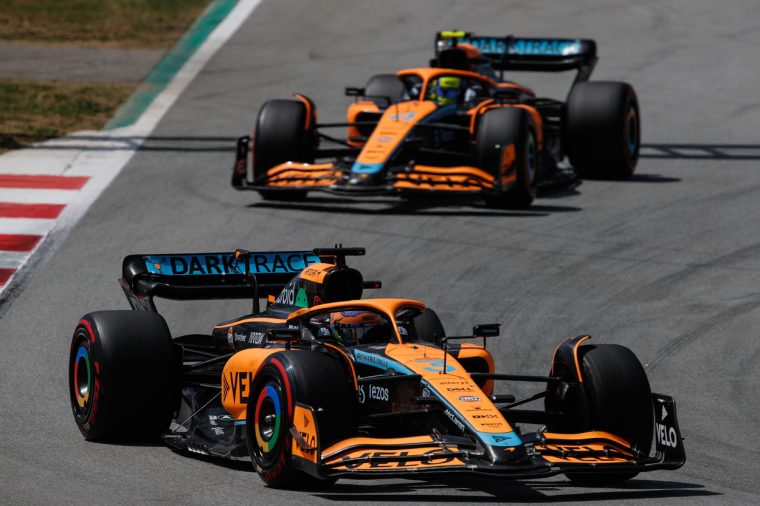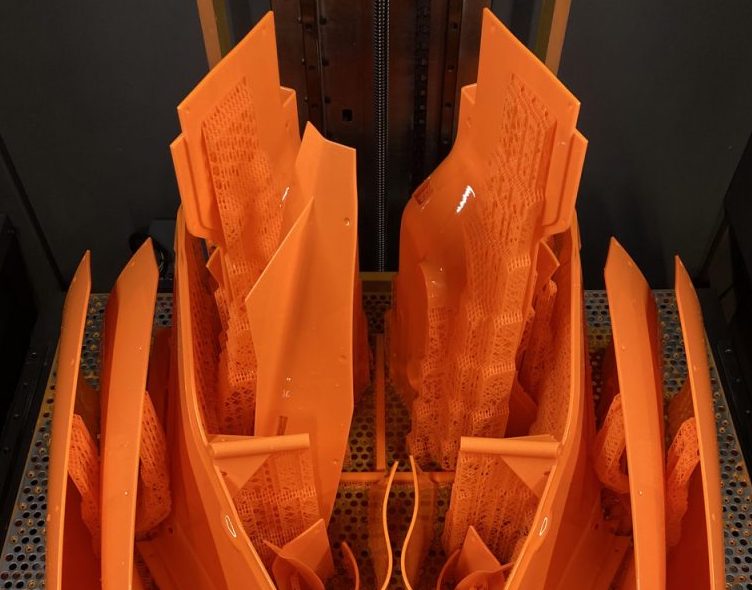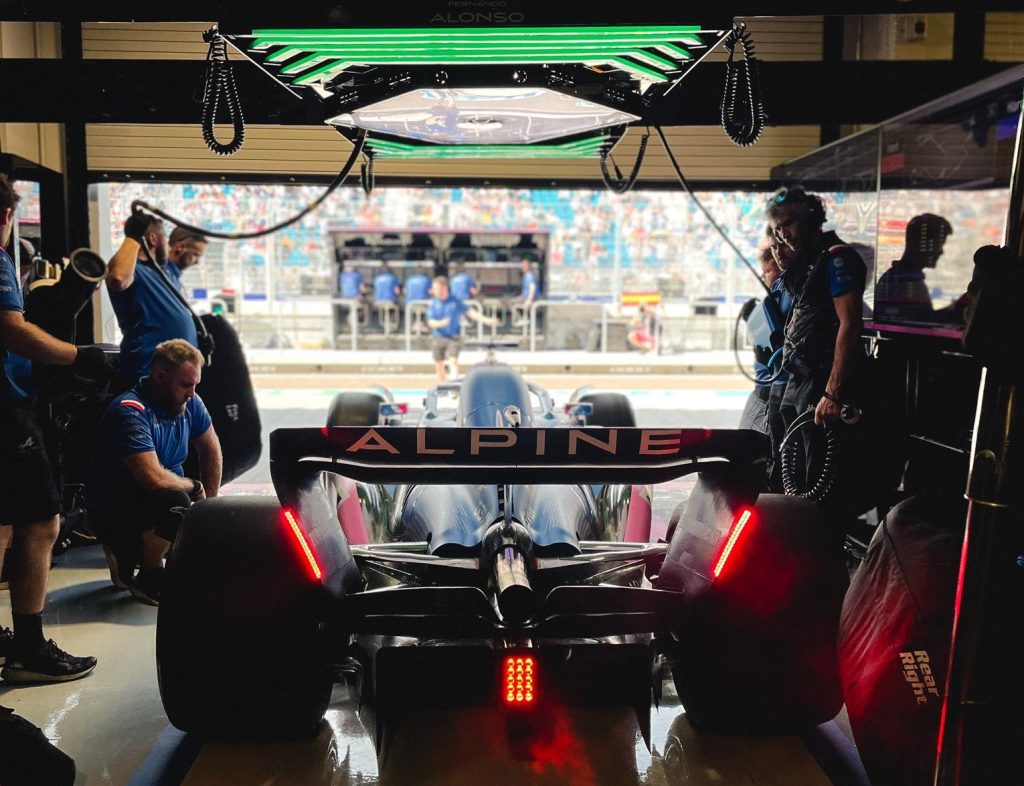British Formula 1 team McLaren Racing now 3D prints up to 9,000 parts each year, long-term manufacturing partner Stratasys has revealed.
Using five Stratasys Neo 800 3D printers, the outfit has created numerous aerodynamic parts across its front and rear wing R&D programs, as well as large elements of its car’s side bodywork and top-body. According to the team’s Head of AM Tim Chapman, the technology has also become advanced enough for end-use applications, while continuing to help accelerate its aero-testing initiatives.
“Wind tunnel testing is still the gold standard when assessing how every surface works together, either as an assembly or as a complete car,” explains Chapman. “Our Neo series of 3D printers have helped us to dramatically reduce the lead times of our aerodynamic wind tunnel components and projects.”
“Stereolithography technology and materials have evolved – changing the way we use it. We do not just manufacture prototypes anymore.”

Stratasys’ SLA 3D printing expansion
Over the last 24 months, Stratasys has expanded its portfolio to include more technologies, and extend its reach beyond the users of its proprietary Fused Deposition Modeling (FDM) systems. Thus far, this expansion has seen Stratasys buy Origin to build out its Digital Light Projection (DLP) offering, in addition to its acquisition of Xaar 3D, which foreshadowed the launch of its H-Series 3D printers.
In February 2021, Stratasys bought SLA 3D printing firm RPS as well, in a move that has seen it merge its acquisition’s Neo line of industrial stereolithography machines into its wider offering. As such, Stratasys’ SLA lineup now includes the Neo 450s, Neo 450e and Neo 800 3D printers, the latter of which features an 800 x 800 x 600 mm build volume and a laser that can focus down to a size of 150-600 microns.
While the acquisition saw Stratasys’ V650 SLA 3D printer scrapped, it provided the firm with access to RPS’ already-established customer base, thus strengthening its position in the automotive and tooling markets. At the time, Stratasys CEO Yoav Zeif also hailed the Neo’s “reliable and accurate builds” as being “superior” to those made by competitors, and it appears this is now playing out at McLaren.

McLaren’s aerodynamic advances
McLaren’s Stratasys partnership dates back to at least 2017, when they agreed to an initial four-year collaboration, and since then, the British outfit has continued to make progress with its in-house 3D printing fleet. Installed at the team’s Woking base, its systems allow for the 3D printing of jigs, templates and small molds, which would otherwise be machined in a slower, more material-intensive process.
Primarily, however, McLaren uses its Neo 800s to support its wind tunnel testing projects, by deploying them to 3D print 60% scale models of prospective parts. These, in turn, are iteratively developed to optimize the team’s aero package and find more downforce for its current car, as well as effectively providing it with more grip, and balancing its front and rear loads.
In doing so, Stratasys says its partner has now reported making “big strides” in its wind tunnel testing programs, thanks in particular to the accuracy and throughput of the Neo 800. The machine’s large bed allows for the creation of 50 to 60 air pressure housings at once, parts that are designed for embedding into McLaren’s race cars, and enabling its pitwall to monitor its car’s aero performance.
Stratasys’ 3D printers also allow the outfit to produce large parts like scale model top-bodies in as little as three days, while reducing its related costs, by saving it from having to outsource to contractors. McLaren’s time savings are further extended by its use of Somos PerFORM Reflect, a resin that takes 30% less time to post-process, something Chapman says expedites the whole testing process.
“We find the high-definition components from our Neo machines require minimal hand finishing, which allows much faster throughput to the wind tunnel,” adds Chapman. “In addition to speed, we can now produce wind tunnel parts with supreme accuracy, detail and surface finish, which has enabled our team to enhance testing and find innovative new ideas to improve performance.”
“I cannot overstate how important these benefits are in Formula 1, where the smallest design iteration can make all the difference between winning, losing or making up positions on the grid.”

Additive manufacturing in Formula 1
Stratasys’ 3D printers are far from the only ones being used in the world of Formula 1, where the technology continues to be deployed at scale in the production of wind tunnel testing parts. In fact, speaking to 3D Printing Industry in May, Alpine’s Pat Warner revealed the extent of 3D printing in F1, with SLA being utilized widely up and down the grid for aerodynamic prototyping.
Williams Racing, for instance, worked with Nexa3D last season to create functional components leveraging the company’s high-speed NXE400 3D printer. Specifically, using the technology, Williams 3D printed F1 wind tunnel testing parts as a means of assessing the aerodynamic properties of its race cars and remaining competitive.
In terms of metal 3D printing, the Alfa Romeo ORLEN F1 team also continues to deploy Additive Industries’ technology within the production of its cars. While the team’s latest challenger has fewer additive manufactured aero-parts than before, it’s still said to be fitted with multiple 3D printed F1-grade “critical components.”
To stay up to date with the latest 3D printing news, don’t forget to subscribe to the 3D Printing Industry newsletter or follow us on Twitter or liking our page on Facebook.
While you’re here, why not subscribe to our Youtube channel? featuring discussion, debriefs, video shorts and webinar replays.
Are you looking for a job in the additive manufacturing industry? Visit 3D Printing Jobs for a selection of roles in the industry.
Featured image shows McLaren’s 2022 Formula 1 cars. Photo via Stratasys.



